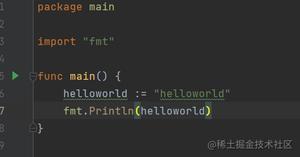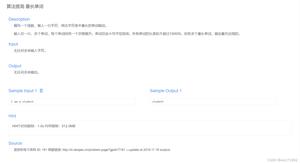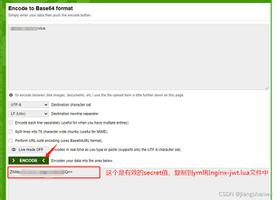Python语言中的显式类型转换
我们所有人都可以声明并使用数据类型。我们是否曾经想过他们的相互转换?在本文中,我们将学习如何使用Python(也称为类型转换)中的内置函数来转换这些数据类型。类型转换有两种类型:隐式和显式。在本模块中,我们将仅讨论显式类型转换。
现在让我们看一些基本的和类型的转换
Python中的整数类型转换
int()函数允许我们将任何数据类型转换为整数。它正好接受两个参数,即Base和Number,其中Base表示整数值所属的基数(binary [2],octal [8],十六进制[16])。
Python中的浮点类型转换
float()函数允许我们将任何数据类型转换为浮点数。它只接受一个参数,即需要转换的数据类型的值。
示例
#Type castingvalue = "0010110"
# int base 2
p = int(value,2)
print ("integer of base 2 format : ",p)
# default base
d=int(value)
print ("integer of default base format : ",d)
# float
e = float(value)
print ("corresponding float : ",e)
输出结果
integer of base 2 format : 22integer of default base format : 10110
corresponding float : 10110.0
在上面的代码中,我们还在Python中使用base转换了整数
Python中的元组类型转换
tuple()函数允许我们转换为元组。它只接受一个参数(字符串或列表)。
Python中的列表类型转换
list()函数使我们可以将任何数据类型转换为列表类型。它只接受一个参数。
Python中的字典类型转换
dict()函数用于将顺序(键,值)的元组转换为字典。键本质上必须是唯一的,否则重复的值将被覆盖。
示例
#Type castingstr_inp = 'Nhooo'
# converion to list
j = list(str_inp)
print ("string to list : ")
print (j)
# conversion to tuple
i = tuple(str_inp)
print ("string to tuple : ")
print (i)
# nested tuple
tup_inp = (('Tutorials', 0) ,('Point', 1))
# conversion to dictionary
c = dict(tup_inp)
print ("list to dictionary : ",c)
# nested list
list_inp = [['Tutorials', 0] ,['Point', 1]]
# conversion to dictionary
d = dict(list_inp)
print ("list to dictionary : ",d)
输出结果
string to list :['T', 'u', 't', 'o', 'r', 'i', 'a', 'l', 's', 'p', 'o', 'i', 'n', 't']
string to tuple :
('T', 'u', 't', 'o', 'r', 'i', 'a', 'l', 's', 'p', 'o', 'i', 'n', 't')
list to dictionary : {'Tutorials': 0, 'Point': 1}
list to dictionary : {'Tutorials': 0, 'Point': 1}
Python中的字符串类型转换
str()函数用于将整数或浮点数转换为字符串。它只接受一个参数。
Python中的Ascii chr()和ord()类型转换
chr()-此函数用于将整数类型转换为字符类型。
ord()-此函数用于将字符类型转换为整数类型。
示例
#Type castingchar_inp = 'T'
#converting character to corresponding integer value
print ("corresponding ASCII VALUE: ",ord(char_inp))
int_inp=92
#converting integer to corresponding Ascii Equivalent
print ("corresponding ASCII EQUIVALENT: ",chr(int_inp))
#integer and float value
inp_i=231
inp_f=78.9
# string equivalent
print ("String equivalent",str(inp_i))
print ("String equivalent",str(inp_f))
输出结果
corresponding ASCII VALUE: 84corresponding ASCII EQUIVALENT: \
String equivalent 231
String equivalent 78.9
结论
在本文中,我们学习了Python 3.x中的显式类型转换。或更早。
以上是 Python语言中的显式类型转换 的全部内容, 来源链接: utcz.com/z/322526.html








